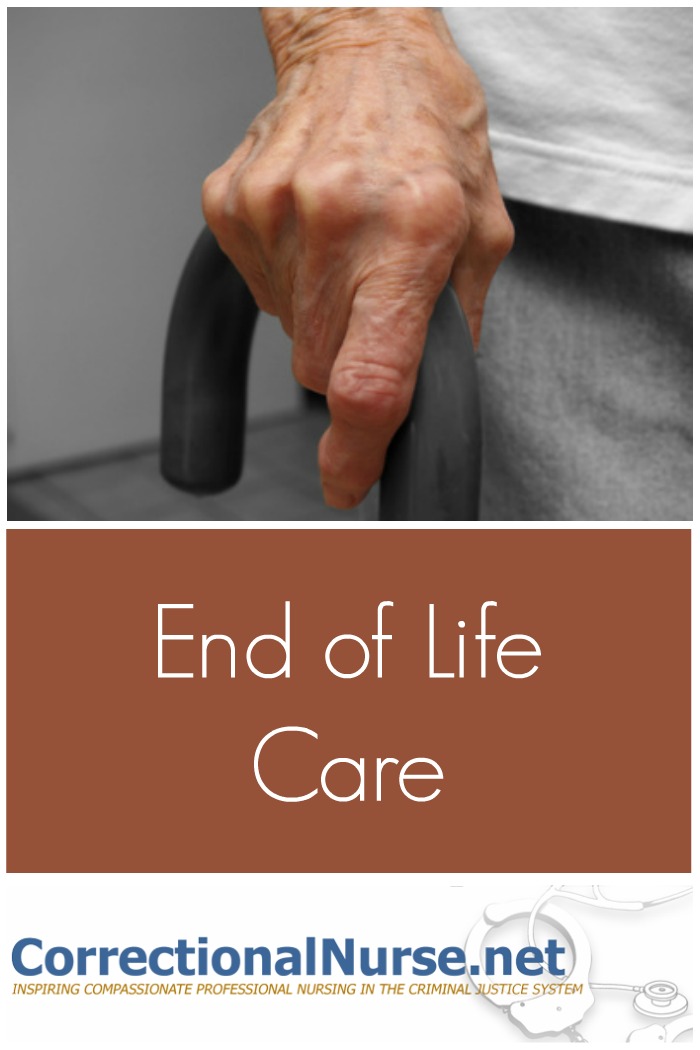Many states and counties are reeling from the increased expenses to continue providing healthcare to an aging inmate population. As the average age of US inmates increases, chronic disease and cancers escalate.
In an earlier post I talked about the basics of the aging inmate population. News articles pop up almost weekly about state correctional systems struggling with rising health care costs due to elder inmates and chronic disease.

A growing segment of the aging inmate population is those with cancer and other terminal illnesses requiring specialized care. Recently I spoke with Susan Loeb, PhD, RN, a nurse researcher implementing NINR granted funded research on end of life care in the PA Prison System [Correctional Nursing Today Radio Show]. Her research will lead to a toolkit for facilities to implement to develop a hospice program. It has been reported that at least 70 correctional facilities in the US have some type of hospice program with over ½ of them including inmate caregiver programs. Some facilities are partnering with community hospice services to provide needed staff education and specialty resources. Those with inmate caregiver programs have seen a positive impact on the attitudes and culture of both the inmate and custody community. An independent film was created following 3 dying inmates at the Kansas State Penitentiary. Edgar Berans, film producer, sites multiple positive outcomes of the program in a recent radio interview.
Some progressive correctional systems such as Washington State and California have already created assisted-living and long-term care facilities within their prison systems to accommodate these needs. Elderly inmates can fall victim to predatory younger inmates and require equipment such as wheelchairs and canes difficult to incorporate into a standard correctional system. Equipment of this type can be used as weapons if not properly managed.
Elder inmates also require environmental adaptations not usual in the correctional setting. They are unable to climb to top bunks and can become rattled or agitated by noise stress in prison barracks. Disabled inmates are challenged by stair or are unable to stand for long periods in the various lines that are a normal part of prison life.
How is your correctional system handling inmates at the end of life? Weigh in using the comment section of this post.
Leave a Reply